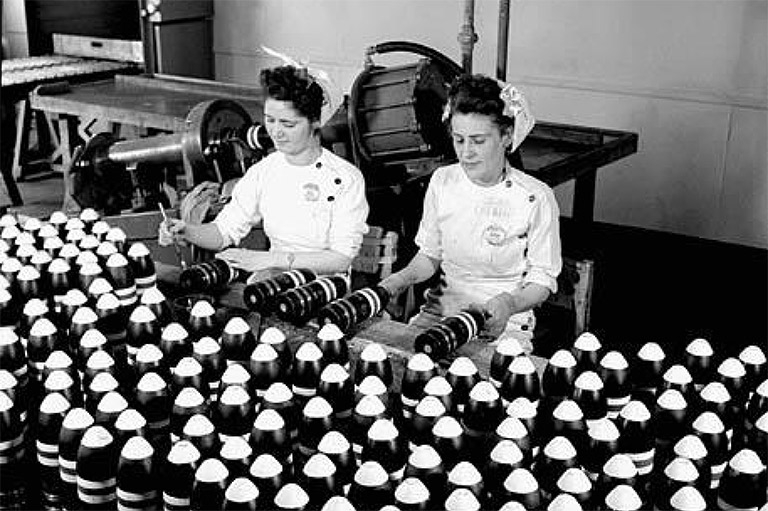Discover a wealth of interesting, entertaining and informative stories in each issue, delivered to you six times per year.
Expo 67 Unit Plan
Grade Levels: Grades 9/10
Subject Area: Social Studies, History
Overview
This Unit Plan encourages teachers to reconsider their twentieth century Canadian History program, using Expo 67 as a “lens” from which to examine Canada both at “100” and “150” years. Given the Canada 150 context, this seems an appropriate opportunity to reflect on the historical significance of Expo 67 — its achievements and flaws — from a variety of perspectives.
Consequently, Expo 67 can be used as the basis for a rich authentic summative task which can be a Culminating Assessment for the entire course.
This assessment will challenge students to:
-
Transfer their knowledge and understanding from one context to another
-
Demonstrate their proficiency with (more than one) Historical Thinking Concepts
-
Synthesize new understandings based on historical research - primary and secondary
-
Apply inquiry skills through various formative tasks, acquiring & integrating feedback
Using Expo 67 as a “lens” through which the twentieth century is refracted backwards to 1900 and forwards to the present, teachers can ask the essential question:
“If Expo 67 celebrated “Man and His World,” what might an Expo in 2017 celebrate?”
And if posed at the outset, teachers can design their course to answer this question by the end.
Using the article “Mission Impossible” from the June-July 2017 issue of Canada’s History magazine as the basis for this Culminating Assessment, teachers can highlight the significant commemoration that Expo 67 sought to celebrate - Canada’s Centennial. Notwithstanding that achievement, these lessons also challenge teachers/students to consider what Historical Understandings/Voices/Communities were NOT well represented at Expo 67. This is featured in a number of exercises that we have chosen to call “EXNO ‘67” - as if to suggest that important perspectives were missing from that commemoration. Teachers can explore this through a number of suggested strategies and student tasks.
Time Required
This Unit Plan suggests an overarching unit. The scope and sequence could cover the whole semester using EXPO 67 as the organizing focus. However, teachers may also utilize this unit plan and three sample lessons as:
- An activation task to hook students at the start of their programming
- A Summative task for a unit on the Post War/1960s
- A Culminating Assessment, in lieu of a formal examination
Note: Each lesson has suggested timing for teachers
Learning Outcomes
Learning Goals & Strategies
Using the principles of Understanding by Design (UbD), the following planned-program is suggested with lessons as samples of this overarching culminating assignment.
Activation of Learning
What do students already know about the 1960s? Positing this question for students will elicit good anecdotal data for a teacher from which to plan the activation of learning. Several strategies are provided to help teachers best diagnose what prior knowledge exists. The Sample Lesson provided is an introductory lesson designed to activate this knowledge. At the outset, teachers are also encouraged to (re-)introduce the Historical Thinking Concepts that will be most thoroughly explored in this Unit Plan/course, and structure a thematic guide for the the Summative Task. Finally, teachers must pose the essential question for the Culminating Task and lead students to a deeper understanding of the significance of this question.
Acquisition of Knowledge
What would Canadians experience in the Canada Pavilion at Expo 2017? This can become a guiding question as teachers design their program for how students will acquire the knowledge necessary for the completion of the Unit. Again, multiple strategies are provided to help teachers guide their students. Pivotal to this is the introduction of the Summative Task. Teachers will be encouraged to explain this project in detail and design rich lessons around the Historical Thinking Concepts - principally, significance, perspective and cause/consequence. The Sample Lesson included will demonstrate a cause/consequence strategy. Sample graphic organizers, rubrics and suggested digital tools are provided to enable this learning. As well, teachers will be required to demonstrate sample digital models for their students. There is also an expectation that teachers will emphasize numeracy skills as students acquire statistical data to inform their understandings.
Application of Learning
The Application of Learning strategies provided here will encourage teachers to explore historical perspectives specifically around what ‘voices’ were not well represented at Expo 67, and which voices need to be better-represented in 2017. The Sample Lesson will demonstrate an approach to this utilizing a ‘concept-wall’ approach, as well as regular formative feedback through conferencing with students. Directions for submission of the final Culmination projects are also offered for teachers.
By implementing this plan at various stages throughout the course, teachers will have multiple opportunities to demonstrate the “application of learning” within their existing curricular program. Using this approach, teachers need-not teach new material, they can however, redesign their objectives to complete a Culminating Summative Assessment as they go along.
Materials/Resources
Backgrounder: teachers may find these useful for their own learning and for student acquisition of general knowledge:
- “Expo 67: Mission Impossible” by Julie Barlow and Jean-Benoit Nadeau from the June-July 2017 issue of Canada’s History magazine
- “Expo 67” from Canadian Encyclopedia
- “Expo67 Man and His World” by MTLTV (video 10 mins)
- “The Canadian Pavilion, Expo 67” by NFB (video 20 mins)
- “Expo 67” by CBC/Radio Canada (video 4 mins)
- “Building the Islands of Man and this World Expo 67” by gsprv (video 5 mins)
- “Expo 67...A Virtual Experience: Man and His World” by Library and Archives Canada
- CBC Digital Archives - “Expo 67: Montreal Welcomes the World”
- CBC Digital Archives - Search results for “expo 67”
- “An Expo 67 Kaleidoscope” by Christopher Moore
Commentary (secondary commentary on the legacy of Expo 67)
- “17 Things You Need To Know About The Largest Event In Montreal History” from MTL Blog
- “In 1967, change in Canada could no longer be stopped” from The Globe and Mail
- The Legacy of Expo 67 by Concordia University (video 46 mins)
- “Want to see how far we have come? Compare Canada 150 to Expo 67: Hébert” from the Toronto Star
- “Why Canada’s 150th birthday celebration beats Expo 67: Cohn” from the Toronto Star
- Expo 67 - Heritage Minute by Historica Canada (video 1 min)
- “Expo 67: Canada welcomes the world but reveals a tear in its national fabric” from A People’s History by CBC
- “Expo 67 hostesses reminisce about the thrills and starpower, 50 years on from” from CBC
Primary Resource and Websites:
- “4 immigrant architects and an ashtray: How Expo 67's Canada Pavilion was born” from CBC
- “Expo 67's strange remains still exude magic across Canada's landscape” from CBC
- “'I'm on a high': Habitat 67 architect proud to see his creation on a stamp” from CBC
- “Expo 67 fashion exhibit recalls groovier times in Montreal” from CBC
- Google search for “expo 67 song”
- Expo 67 in Montreal: A photo collection
- Expo 67 Links
Additional Primary Documentary Footage:
- “Impressions of Expo 67” by NFB (video 9 mins)
- “Expo 67 - Man and His World” by World’s Fair Photos
- “1967 Ontario - A Place to Stand” by BJ82 (video 3 mins)
- “Bobby Gimby’s Canada Song” by Picardy (video - 3 mins)
Themes associated with this article
Advertisement





